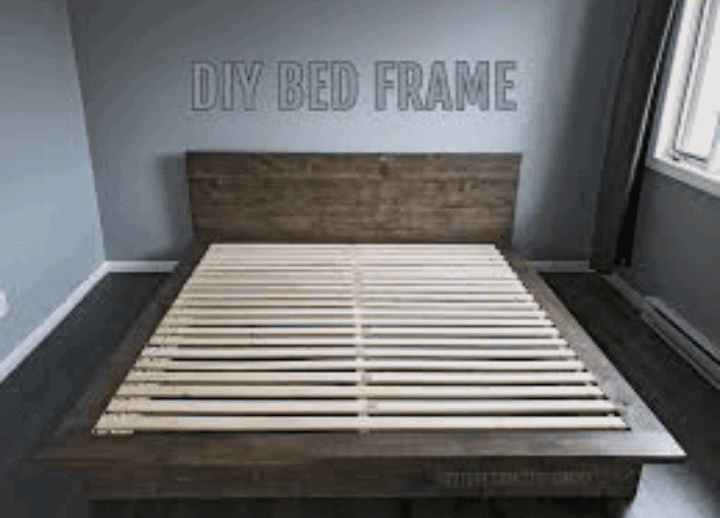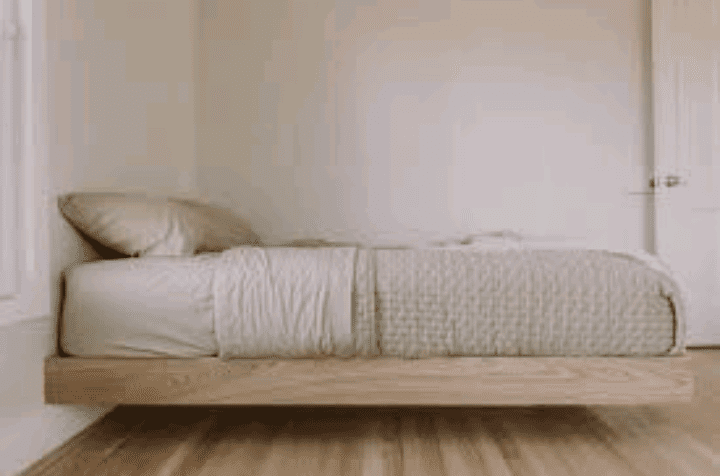Creating your own bed frame is not just a DIY project; it’s a journey toward a more personalized and comfortable sleep sanctuary. A DIY bed frame allows you to take control of your bedroom aesthetic, infusing it with your unique style and preferences. In this simple yet comprehensive guide, we’ll explore the art of crafting a bed frame from scratch, breaking down the process into easy-to-follow steps.
Whether you’re a seasoned DIY enthusiast or a novice with a passion for hands-on projects, building your bed frame is a rewarding venture that promises a sense of accomplishment and a good night’s sleep.
Bed frames are the backbone of a bedroom, providing support for your mattress and setting the tone for the entire space. By choosing to embark on this DIY journey, you gain the ability to tailor your bed frame to match your individual taste and needs.
From selecting the type of wood to deciding on the finishing touches, each decision contributes to the creation of a piece that is not only functional but also an expression of your creativity.
Throughout this guide, we’ll navigate the essential elements of DIY bed frame construction, offering practical advice and relatable examples to inspire your imagination. Whether you’re aiming for a rustic, minimalist, or mid-century modern look, the steps provided will guide you toward building a bed frame that suits your style and enhances the overall ambiance of your bedroom.
So, let’s go into the world of DIY bed frames and embark on the journey of transforming your bedroom into a cozy haven tailored just for you.
Read also: 5 Top Soft Skills to make you more Marketable for Jobs
DIY Bed Frame

1. The Foundation – Understanding Bed Frame Basics
Before embarking on the journey of building your bed frame, it’s crucial to have a solid understanding of its basic components. A typical bed frame consists of a headboard, footboard, side rails, and support slats. The choice of materials plays a significant role in determining the frame’s strength, durability, and aesthetic appeal. Common materials include wood, metal, and a combination of both.
To illustrate, let’s consider a classic wooden bed frame. Wood, with its natural warmth and versatility, is a popular choice. Pine, oak, or maple are commonly used due to their durability and ease of manipulation. For a modern touch, incorporating metal elements can add a sleek and industrial look to your DIY bed frame.
2. Planning Your DIY Bed Frame
Like any successful project, a well-thought-out plan is the key to a sturdy and visually appealing bed frame. Start by measuring the dimensions of your mattress, taking into account any extra space for bedding. Decide on the style of your bed frame – whether you prefer a platform bed, a four-poster frame, or a minimalist design.
Consider your skill level and the tools at your disposal. If you’re a beginner, opt for a simpler design with straight cuts and basic joinery techniques. As you gain confidence and experience, you can gradually progress to more complex styles. Sketching your design on paper or using design software can be immensely helpful in visualizing the final product.
3. Gathering Materials and Tools
Once your design is finalized, it’s time to gather the materials and tools necessary for the project. A trip to the local hardware store or lumberyard awaits, where you’ll find an array of options for wood, screws, and other hardware. Consider the finish you desire for your bed frame – whether you prefer a natural wood look, a stained finish, or a painted surface.
Tools such as a saw, drill, screws, measuring tape, and a level are essential for the construction process. Don’t forget safety gear, including safety glasses and hearing protection. Investing in quality materials and tools will not only enhance the aesthetics of your bed frame but also contribute to its longevity.
Read also: DIY 101 Guide: How to Crochet a Blanket
4. Step-by-Step Construction Guide
With your plan in hand and materials at the ready, it’s time to delve into the construction process. The following step-by-step guide provides a roadmap for building a classic wooden bed frame:
Step 1: Cutting the Wood Begin by cutting the lumber according to your design specifications. Measure twice, cut once – this timeless advice ensures precision and reduces errors. A mitre saw or a circular saw can be invaluable for making accurate and clean cuts.
Step 2: Assembling the Headboard and Footboard The headboard and footboard serve as the focal points of your bed frame. Depending on your design, attach the vertical and horizontal pieces using appropriate joinery techniques. For added flair, consider decorative elements like inset panels, curves, or intricate carvings.
Step 3: Connecting the Side Rails Connect the headboard and footboard with the side rails to form the basic frame. Reinforce the joints with screws or dowels for added stability. Take care to ensure that the frame is level and square to avoid any wobbling or unevenness.
Step 4: Adding Support Slats To support the mattress, add evenly spaced support slats across the frame. The number of slats will depend on the size of your mattress – the larger the mattress, the more slats you’ll need. Use screws or brackets to secure the slats in place, ensuring they can bear the weight of the mattress and occupants.
Step 5: Finishing Touches Sand the entire bed frame to smooth any rough edges or surfaces. Choose a finish that complements your style – whether it’s a clear varnish to showcase the natural beauty of the wood or a bold paint color to make a statement. Allow ample time for the finish to dry before assembling the bed.
5. Customization and Personalization
One of the joys of building your own bed frame is the opportunity to infuse it with your unique style. Consider various customization options to make your bed frame truly one-of-a-kind:
Headboard Design: Experiment with different headboard designs, such as a reclaimed wood feature, a tufted upholstery panel, or a geometric pattern.
Storage Solutions: Integrate storage drawers or shelves into the bed frame for a practical and space-saving solution. This is particularly useful in smaller bedrooms where maximizing storage is essential.
Under-Bed Lighting: Incorporate LED strip lights or battery-operated puck lights under the bed for a subtle and functional lighting solution.
Canopy or Curtains: If you’re building a four-poster bed frame, consider adding a canopy or curtains for a touch of elegance and coziness.
6. Troubleshooting and Common Mistakes
Even seasoned DIY enthusiasts encounter challenges during construction. Being aware of common mistakes and how to troubleshoot them can save you time and frustration. Here are some tips to navigate potential pitfalls:
Uneven Surfaces: Ensure the bed frame is level and the corners are square. Adjust as needed before attaching the slats.
Squeaky Joints: Apply wood glue to joints before securing them with screws to minimize squeaking. If the squeaking persists, consider adding felt pads between contacting surfaces.
Mismatched Dimensions: Double-check your measurements at every stage to avoid discrepancies that can lead to misalignments.
Weak Support Slats: If the support slats are too thin, consider adding an additional layer or reinforcing them with a central beam for added strength.
7. Inspiring Examples
To fuel your creativity, let’s explore a few real-life examples of DIY bed frames that showcase the diverse possibilities:
Rustic Elegance: Craft a bed frame from reclaimed barn wood, complete with a distressed finish. Add wrought iron details for a touch of rustic charm.
Minimalist Platform Bed: Embrace simplicity with a low-profile platform bed featuring clean lines and a neutral color palette. This design works well in contemporary and Scandinavian-inspired spaces.
Mid-Century Modern Flair: Combine sleek lines with tapered legs to create a mid-century modern-inspired bed frame. Opt for teak or walnut wood for an authentic touch.
Upcycled Pallet Bed: For an eco-friendly option, repurpose wooden pallets into a unique and budget-friendly bed frame. Sand and paint the pallets to match your desired aesthetic.
Read also: Waste To Fertilizer: What You Need to Know
